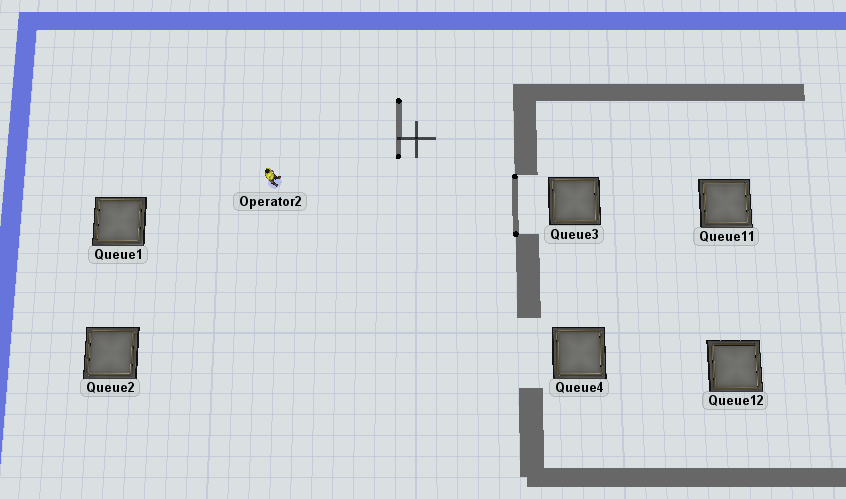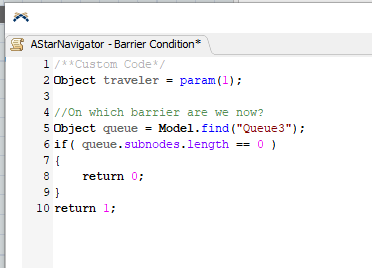Hi,
We are wondering if it is possible to know on which barrier a rule is triggered when using conditional barriers in A*. Attached is an example model that shows a situation we want to model. When there is an item in queue3 or queue4 the entrance next to that queue should not be available for the operator. In that case the operator should walk around the barriers to one of the other queues.
We wanted to solve this with some conditions on barriers. The problem we have there is that if we assign a rule to a barrier, we don’t know on which barrier that rule is. When you look at the code of the rule the only object that is available is the traveler (as param(1)).
As we understand it this would mean that we need a rule for the barrier located next to queue3 and an extra rule for the barrier (which is not in the model) located next to queue4. This is fine in this example model, but in the actual model there are many more of these locations. It does feel really strange if we need to add a separate rule for each single barrier.
The code in the rule fires once for each barrier that has that rule, so we assume it is known somewhere for which barrier this code is executed. Is this information also available in FlexSim? If we would know the barrier on which the current rule code is executed we would be fine (like Object barrier = param( 2) or something).
If that information is not there, how should we solve such a problem in general?
Thank you for any tips on this.



